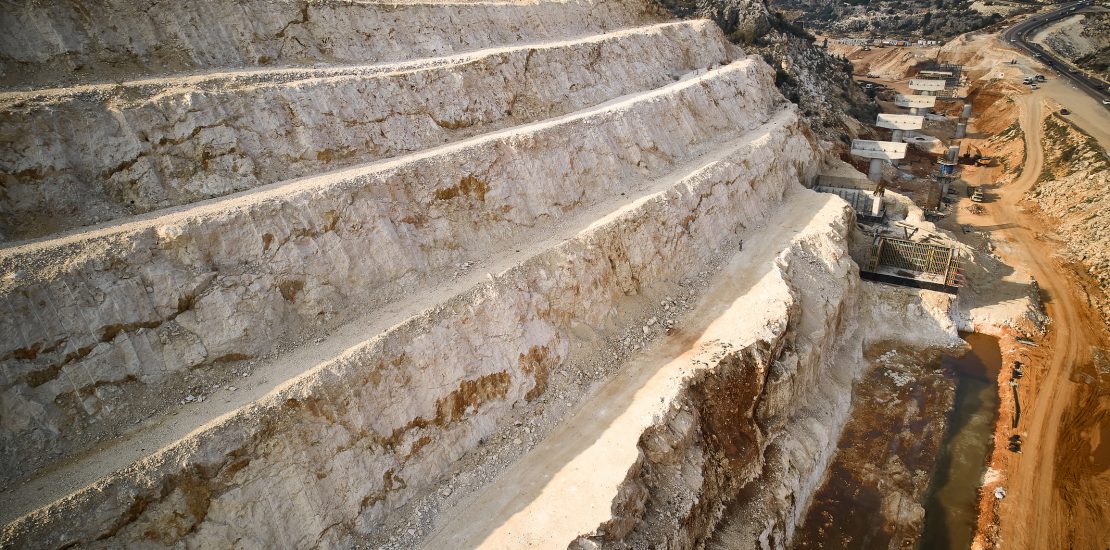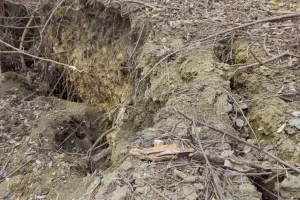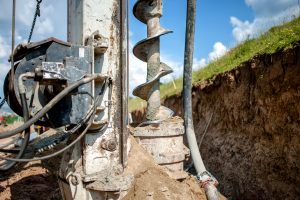The Importance of Bedrock Profiling in Geotechnical Services
- October 27, 2023
- Posted by: Velosi Author
- Categories: Geotechnical, Insights

Introduction
Bedrock profiling in geotechnical services methodology plays a pivotal role in determining the foundation of the surface. It includes systematically exploring Surface structural composition and characteristics of bedrock layers beneath the ground. Nevertheless, why does Bedrock profiling matter greatly in construction, mining, and civil engineering?
It is a modern technique to determine soil layers’ quality and density. It ensures whether that certain area is supportive of heavy construction projects. Thus, aiding in project planning and risk assessments. Furthermore, this process contributes to protecting both human safety and investments in the long run.
What is Bedrock – Composition & Characters?
Bedrock is a solid layer of rock that lies beneath the soil, sediment, or loose materials at the earth’s surface. It beholds the geological characters upon which all old and new earth monuments are built. Moreover, Bedrock includes rocks, such as granite, limestone, or shale with different characteristics according to their locations.
Bedrock plays a vital role in maintaining stability on the land by determining proper groundwater flow, mineral deposits, and landscape formations. In the construction industry such as in the energy sector, understanding the importance of Bedrock can be much more beneficial just like environmental sciences.

Types of Bedrock:
Igneous Rock: These types of rocks are found from the cooling and solidification of lava on the surface of the earth like volcanoes or magma inside the earth’s crust.
Examples include granite and basalt. Igneous bedrock tends to be hard and resistant to weathering.
Sedimentary Rock: Comprised of accumulated sediments like sand, silt, and clay. Layers of sedimentary rocks reveal clues about Earth’s history. Examples include limestone and sandstone.
Metamorphic Rock: Existing rock (igneous or sedimentary) is transformed by heat and pressure. It often displays unique textures and mineral compositions. Examples include marble (from limestone) and schist.
How Does a Bedrock Form in the Soil?
When the two Tectonic plates on the earth’s surface collide with one another under heat and pressure, they create Bedrock layers on a rock. Furthermore, sediments that have been deposited in lakes, oceans, and rivers for millions of years accumulate and solidify under pressure as they are surrounded by minerals and organic material.
They can eventually change rocks into sandstone, limestone, and shale. Moreover, Metamorphism and Magmatic Processes can also lead to bedrock formation.
Exploring Methods for Bedrock Profiling:
- Borehole Drilling:
Geologists start by drilling holes in the earth’s surface to collect the core of bedrock layers. This allows them to discover structural characters and compositional features of the soil.
- Seismic Surveys:
Seismic waves, produced either by natural events or artificially, probe the subsurface. By measuring how these waves travel through different rock types, researchers are able to create detailed subsurface profiles.
- Ground-Penetrating Radar (GPR):
GPR uses high-frequency radar waves and sends them into this drilled hole. As the waves collide and come back, geologists determine the surface length, density, and other compositional features, especially for shallow bedrock profiling.
- Geophysical Testing:
Lastly, in geophysical testing methods like electrical resistivity, magnetic resonance, and gravity surveys are used to finalize the density and quality of the Bedrock layers in the soil. Through this survey, geologists decide whether they can build structures in certain areas or not.
How Do Bedrock Profiling and Bedrock Mapping Differ?
Bedrock Profiling
Bedrock profiling includes an in-depth investigation of the certain bedrock layer in the soil. It involves steps like drilling boreholes, doing surveys, and perfectly determining the quality of the soil by collecting core samples and checking their structural properties. This method is used to determine soil composition properly in a short time limit.
Bedrock Mapping
On the other hand, Bedrock mapping includes a theoretical project planning for the distribution, location, and geological characteristics of bedrock in a given area. It provides an overview of how things would work in that specific location. However, no construction work is done in this mapping as it is just a theoretical explanation of the plan.

What Challenges and Risks Can You Face During Bedrock Profiling?
- Talking about hardware challenges, Bedrock profiling includes the use of heavy machinery. Moreover, other tools can also cost more. Thus, a brand must invest a good amount for such actions.
- Fault lines, fractures, or unstable bedrock can lead to heavy landslides in terms of typical geological hazards. This can later on create sinkholes and instability.
- Structural failures occur when the bedrock layers are not properly investigated. This can take your life and damage the environment as well.
- Unnecessary drilling and wrong waste disposal can lead to habitat disruption and water pollution. Thus, damaging the environment at a great risk.
- Lastly, in mining and resource industries, deep or inaccessible bedrock can present challenges for extraction, affecting resource availability.
Conclusion
To conclude bedrock profiling is an essential part of geotechnical services, offering indispensable data that significantly influences the planning and execution of robust and dependable structures. By gaining insights into the bedrock formation beneath the surface, geotechnical engineers can identify potential risks, ensuring that structures are engineered to resist natural forces.
Beyond its pivotal role in construction, bedrock profiling serves a multitude of other functions, including but not limited to:
- Conducting comprehensive environmental impact studies
- Managing groundwater resources effectively
- Facilitating mineral exploration endeavors
- Assisting in archaeological research
Please contact us for more information and assistance.



